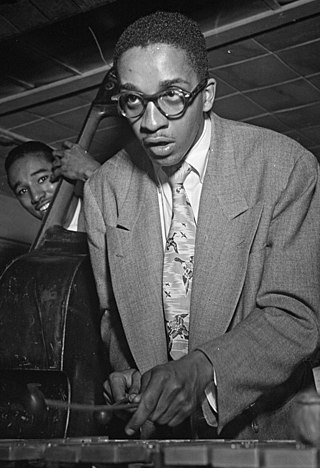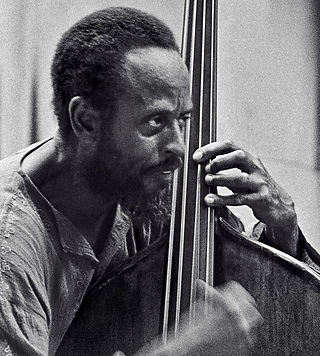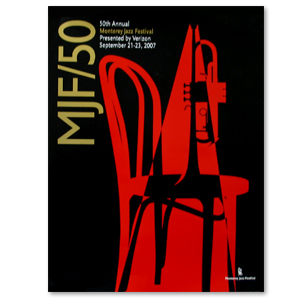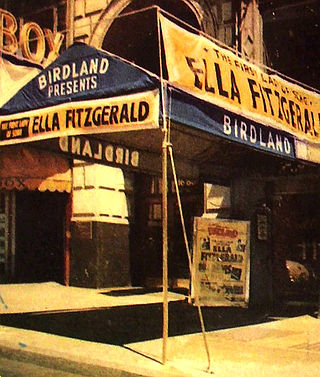Compilation and release
Following requests for an update to Martin Williams's Smithsonian Collection of Classic Jazz (1973), Smithsonian Folkways began the process of selecting music for a new anthology in late 2004. Over fifty acknowledged experts reviewed a list of 2,500 potential tracks and agreed that the set should represent the development of jazz through the 20th century. By March 2005, the Folkways staff had compiled a 300-page document explaining the positive and negative aspects of each potential selection. [2]
Smithsonian Folkways formed a second executive committee of five members in June of the same year. To keep the price low the committee reduced their choices to 110 songs on six CDs. In making their decision, committee members concentrated on the historical impact of the recordings and significance of the musicians, rather than the recordings' commercial success.
After years of deliberation, the committee finalized the selections for the anthology. The committee then contacted more than 30 authors to write articles for the recordings that pertained to their areas of research. Smithsonian Folkways released the anthology on March 29, 2011.
Organization
JAZZ: The Smithsonian Anthology is organized chronologically, covering the history and development of the genre from 1899, the estimated date of composition of "Maple Leaf Rag", to 2003, the date of the latest recording. The book focuses on the individual tracks, describing each recording with two to three pages of liner notes. [3] The executive committee chose to place certain songs out of chronological arrangement in order to maximize the amount of space utilized on each disc.
The first disc opens with Dick Hyman's recording of "Maple Leaf Rag", a historically informed performance that imitates the precision of ragtime compositions on player pianos at the end of the 19th century. Midway through the set Sidney Bechet’s 1932 interpretation gives a "hot jazz" interpretation of the Rag. The final disc begins with a modern take on "Maple Leaf Rag," the 1976 recording by Anthony Braxton and Muhal Richard Abrams. Producer Richard Burgess notes these consecutive examples of how jazz progressed function as, "the pedagogical moment... A lot of the thinking behind the set was to make it good for jazz history, jazz appreciation courses." [4]

Milton Jackson, nicknamed "Bags", was an American jazz vibraphonist. He is especially remembered for his cool swinging solos as a member of the Modern Jazz Quartet and his penchant for collaborating with hard bop and post-bop players.

Oscar Pettiford was an American jazz double bassist and composer. He was one of the earliest musicians to work in the bebop idiom.

John Aaron Lewis was an American jazz pianist, composer and arranger, best known as the founder and musical director of the Modern Jazz Quartet.

Percy Heath was an American jazz bassist, brother of saxophonist Jimmy Heath and drummer Albert Heath, with whom he formed the Heath Brothers in 1975. Heath played with the Modern Jazz Quartet throughout their long history and also worked with Miles Davis, Dizzy Gillespie, Charlie Parker, Wes Montgomery, Thelonious Monk and Lee Konitz.

The Newport Jazz Festival is an annual American multi-day jazz music festival held every summer in Newport, Rhode Island. Elaine Lorillard established the festival in 1954, and she and husband Louis Lorillard financed it for many years. They hired George Wein to organize the first festival and bring jazz to Rhode Island.
Arthur David Davis was a double-bassist, known for his work with Thelonious Monk, John Coltrane, Dizzy Gillespie, McCoy Tyner and Max Roach.

Eric Alexander is an American jazz saxophonist, composer, and educator. Having placed second at the 1991 Thelonious Monk International Jazz Saxophone Competition behind Joshua Redman and ahead of Chris Potter and Tim Warfield, he was soon signed by a record label and has since recorded over 20 albums as a leader and over 300 as a sideman.

The Monterey Jazz Festival is an annual music festival that takes place in Monterey, California, United States. It debuted on October 3, 1958, championed by Dave Brubeck and co-founded by jazz and popular music critic Ralph J. Gleason and jazz disc jockey Jimmy Lyons.
Michael Garrick was an English jazz pianist and composer, and a pioneer in mixing jazz with poetry recitations and in the use of jazz in large-scale choral works.

Al Grey was an American jazz trombonist who was a member of the Count Basie orchestra. He was known for his plunger mute technique and wrote an instructional book in 1987 called Plunger Techniques.

Doug Lawrence is an American jazz tenor saxophonist from Lake Charles, Louisiana.

Frank Benjamin Foster III was an American tenor and soprano saxophonist, flautist, arranger, and composer. Foster collaborated frequently with Count Basie and worked as a bandleader from the early 1950s. In 1998, Howard University awarded Frank Foster with the Benny Golson Jazz Master Award.

Birdland is a jazz club started in New York City on December 15, 1949. The original Birdland, which was located at 1678 Broadway, just north of West 52nd Street in Manhattan, was closed in 1965 due to increased rents, but it re-opened for one night in 1979. A revival began in 1986 with the opening of the second nightclub by the same name that is now located in Manhattan's Theater District, not far from the original nightclub's location. The current location is in the same building as the previous headquarters of The New York Observer.
William Melvin Mitchell was an American jazz tenor saxophonist.

This is a timeline documenting events of Jazz in the year 1959.
This is the discography for jazz record label Prestige Records. Not all original releases are included. Others are listed by the Jazz Discography Project. The earlier New Jazz/Prestige 78rpm releases and the 100/200 series, are omitted. Prestige also released albums on several subsidiary labels including the New Jazz, Bluesville, Moodsville and Swingsville labels.

The Smithsonian Collection of Classic Jazz is a six-LP box set released in 1973 by the Smithsonian Institution. Compiled by jazz critic, scholar, and historian Martin Williams, the album included tracks from over a dozen record labels spanning several decades and genres of American jazz, from ragtime and big band to post-bop and free jazz.
This is the discography of Mosaic Records the American jazz record company and label established in 1982 by Michael Cuscuna and Charlie Lourie. Over three decades the jazz press and general publications have recognized Mosaic, with The New York Times naming it "the most distinctive reissue label in jazz", All About Jazz calling the company "arguably the premiere reissue label in jazz", and Esquire suggesting it is "America's most obsessive jazz label".
"Tune Up" or "Tune-Up" is a composition written by Eddie Vinson, but is traditionally credited to Miles Davis, who first recorded and popularized it. It has become a jazz standard.













